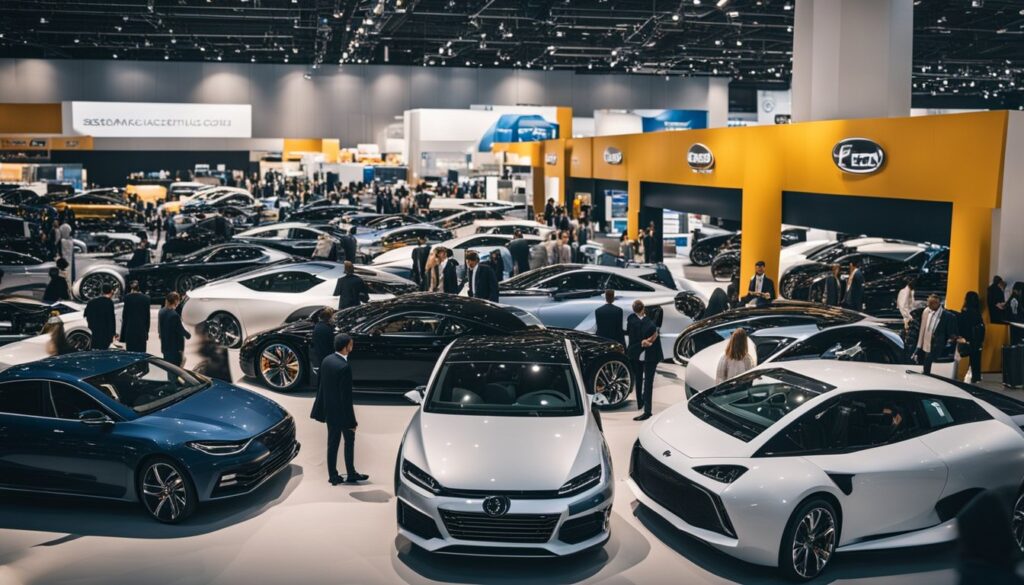In today’s fast-paced world, the car market is more competitive than ever. As technology evolves and consumer preferences shift, major players are vying for supremacy. Understanding who these key players are and their strategies can give you insight into the future of the automotive industry. The race for auto supremacy is defined by innovation, sustainability, and adapting to consumer needs.
Global giants like Tesla, Toyota, and Volkswagen are leading the charge with their advancements in electric vehicles and smart technology. Each brand has carved out its niche, pushing boundaries to attract customers and stay ahead of rivals. By analyzing their approaches, you can see how they respond to market demands and how they aim to innovate in the rapidly changing landscape.
As you delve deeper into this topic, you’ll uncover the factors that drive competition in the automotive sector. Knowing these aspects will help you appreciate the complexities behind your everyday choices in transportation. Stay tuned to discover the dynamics at play in the race for auto supremacy.
The Battlefronts of Automotive Dominance

In the global car market, competition takes place on multiple fronts. Key factors like consumer preferences, technological advancements, and regulatory frameworks shape the landscape and influence which companies succeed. Understanding these dynamics is crucial for anyone interested in the future of automotive dominance.
Evolving Consumer Demands
Modern consumers are increasingly prioritizing sustainability and convenience in their vehicle choices. Electric vehicles (EVs) have surged in popularity as buyers become more eco-conscious. They seek options that reduce their carbon footprint without sacrificing performance.
Key trends include:
- Demand for eco-friendly vehicles
- Preference for smart technology and connectivity
- Increased interest in safety features
Brands that can adapt to these preferences, such as those utilizing advanced AI in their safety systems, have a competitive edge. You can explore more about how AI will enhance safety features to meet these evolving needs.
Technological Innovations
Technological advancements are at the heart of the automotive race. Companies invest heavily in research and development to create vehicles that are safer, smarter, and more efficient. Innovations like autonomous driving systems and enhanced battery technology are game-changers.
Key areas of focus include:
- Artificial Intelligence: AI is crucial for driving safety and efficiency.
- Battery Technology: Improved batteries can extend the range of EVs, making them more attractive.
- Connectivity Features: Smart vehicles offer real-time data sharing, improving user experience and safety.
Staying updated on these technologies helps you understand the future direction of auto manufacturing and what features may soon become standard.
Policy and Regulation
Government policies play a significant role in shaping the automotive industry. Regulations on emissions and safety standards push manufacturers to innovate and comply. Countries are also offering incentives for EV purchases to encourage consumer adoption.
Important components of the regulatory landscape include:
- Emission standards that affect manufacturing
- Safety regulations that ensure consumer protection
- Incentives for electric vehicle adoption
Being informed about these regulations can help you see how they affect market trends, company strategies, and ultimately, your choices as a consumer.
Key Players and Market Strategies

The global car market is diverse and competitive, featuring traditional automakers, innovative electric vehicle startups, strategic collaborations, and specific expansion tactics. Understanding these key players and their strategies can provide insights into the future of the automotive industry.
Leading Traditional Automakers
Established manufacturers like General Motors, Ford, Toyota, and Volkswagen hold strong market positions. Their strategies focus on both innovation and maintaining their legacy models.
These companies invest heavily in research and development to enhance fuel efficiency and integrate advanced technology features into their vehicles. They are also exploring electric and hybrid options to meet changing consumer preferences and regulatory demands.
In addition, traditional automakers are refining production processes to increase efficiency and reduce costs. Their established supply chains and dealer networks provide a significant advantage in market reach.
Rise of Electric Vehicle Startups
The electric vehicle (EV) market has seen rapid growth with startups like Tesla, Rivian, and Lucid Motors making headlines. These companies emphasize innovation, sustainability, and modern design.
Startups often prioritize cutting-edge technology, offering features like autonomous driving and over-the-air updates. They attract environmentally conscious consumers by promoting zero-emission products.
With significant venture capital funding, many of these companies are scaling up production quickly. Their approach focuses on direct-to-consumer sales models, unlike traditional dealerships, allowing for better customer engagement and streamlined transactions.
Collaborations and Alliances
Partnerships are becoming key in the automotive landscape. Traditional automakers are teaming up with tech firms to advance connected vehicle technologies and develop autonomous driving capabilities.
For example, automotive giants may partner with companies like Google or Amazon to integrate advanced software and services. Collaborative efforts can lead to shared resources, reducing development costs and time-to-market for new technologies.
These alliances often extend to manufacturers and infrastructure providers, ensuring that charging stations and service capabilities grow alongside the EV market. This integrated approach enhances the consumer experience and accelerates industry innovation.
Global Expansion Tactics
Automakers are actively seeking to expand their presence in growing markets such as China, India, and Southeast Asia. These markets offer immense potential due to rising middle-class populations and increased demand for personal vehicles.
Companies adapt their products and strategies to fit the local preferences and regulations. This may include lower-cost models or localized production to reduce tariffs.
Trade agreements and partnerships with local firms can also ease market entry. Automakers use these strategies to capture new customers while navigating complex regulatory environments and competitive landscapes.


